Special Report
20 Most Catastrophic Fires and Explosions in US History
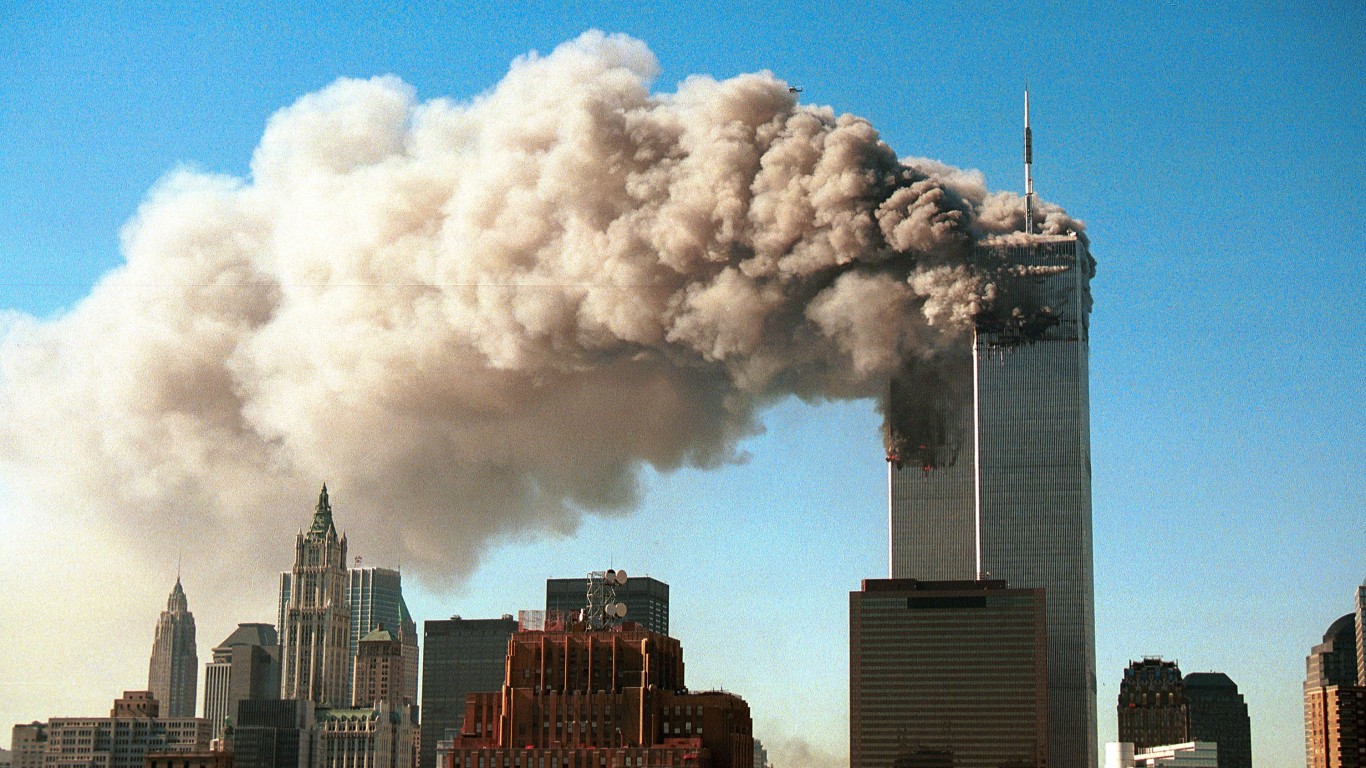
Published:
Last Updated:

Today marks the 22nd anniversary of the September 11 attacks. They will go town as one of the most tragic and terrifying in the nation’s history, as Americans around the world watched the tallest buildings in the country burn and then fall, causing a tremendous loss of life and widespread property destruction.
To identify the deadliest fires and explosions in U.S. history, 24/7 Wall St. reviewed data on fire casualties from the National Fire Protection Association. Fires and explosions were ranked on an estimated number of deaths. (It is important to note that death estimates for these disasters may sometimes vary by source.) Dates, casualty estimates, and locations came from NFPA. Data is current through the end of last year.
In second half of the 19th century, after the conclusion of the Civil War and into the 20th century, there was a major influx of immigrants looking for work, as well as advances in technology. This boom happened faster than safety measures like labor laws and fire codes could advance to anything like what we have today. As a result, many of the most catastrophic fires and explosions in American history happened before 1920.
Six of the most catastrophic fires and explosions in U.S. history happened from 1865 to 1900. Two of these incidents still rank among the top five deadliest: the Sultana steamboat fire of April 27, 1865, in the Mississippi River near Memphis, Tennessee, and the Peshtigo forest fire in northwestern Wisconsin on Oct. 8, 1871. These disasters claimed 1,547 and 1,152 lives, respectively. (These are the 13 most destructive wildfires in U.S. history.)
Five major fires or explosions took place in the United States from 1903 to 1909, making the first decade of the 20th century the deadliest for major U.S. fires and explosions. One of these disasters, another steamboat fire, still ranks among the top five deadliest: the General Slocum steamboat disaster in the East River of New York City on June 15, 1904.
Named after a Civil War general who would later represent Brooklyn in Congress, the wooden triple-deck paddler was chartering a large group of German immigrant Lutherans when it caught fire between Queens and Manhattan, killing more than 1,000 passengers and instigating a national dialogue about steamboat safety. In 1906, the city erected a memorial fountain to serve as a reminder of the tragedy in the Lower East Side’s Tompkins Square Park. It still stands today.
Other than steamboat and forest fires, the list includes four mining disasters, several building fires (including a school, theaters, and nightclub), disasters at ports, and an industrial fire. An earthquake was the cause of the disaster in San Francisco in 1906. (These are 10 of the deadliest natural disasters in the world since 1980.)
Only one of the 20 deadliest fires and explosions in U.S. history happened since 1947 – and it was caused by a group of radical hijackers who sent two planes into the World Trade Center towers, killing thousands of people on the morning of Sept. 11, 2001, including hundreds of first responders.
Here are the deadliest fires and explosions in U.S. history.

20. The Great Chicago Fire
> Est. casualties: 250
> Location: Chicago, IL
> Date: Oct. 8-9, 1871
[in-text-ad]
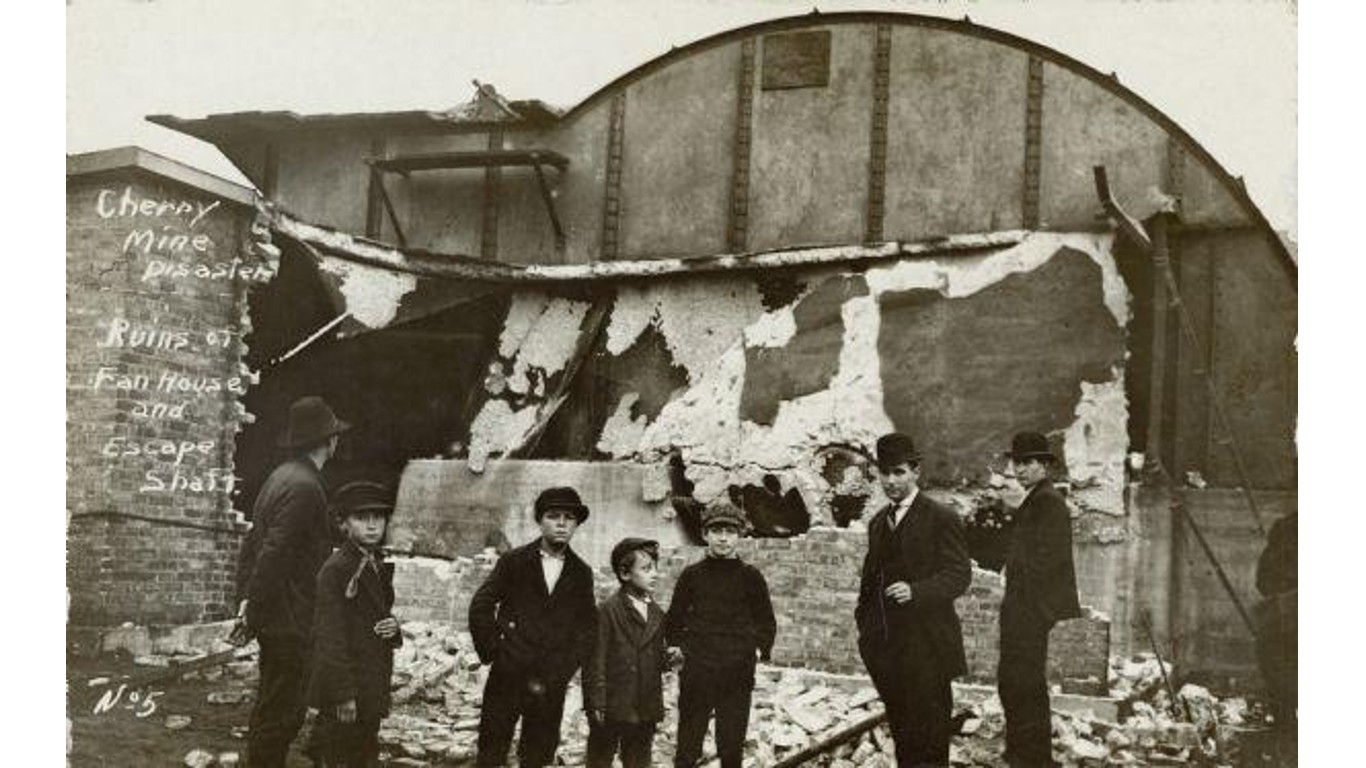
19. The Cherry Mine disaster
> Est. casualties: 259
> Location: Cherry, IL
> Date: Nov. 13, 1909
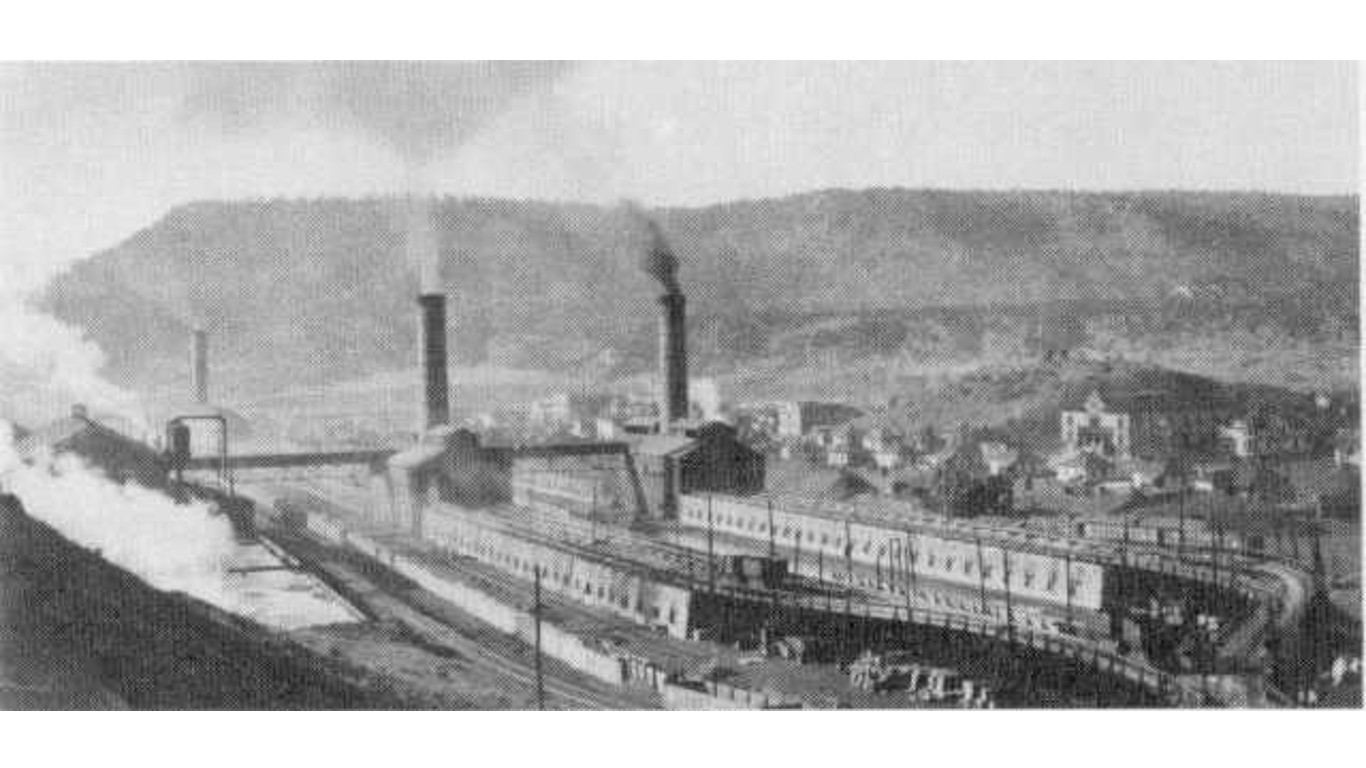
18. The Dawson mining disaster
> Est. casualties: 263
> Location: Dawson, NM
> Date: Oct. 22, 1913
17. The Mather Mine disaster
> Est. casualties: 273
> Location: Mather, PA
> Date: May 19, 1928
[in-text-ad-2]
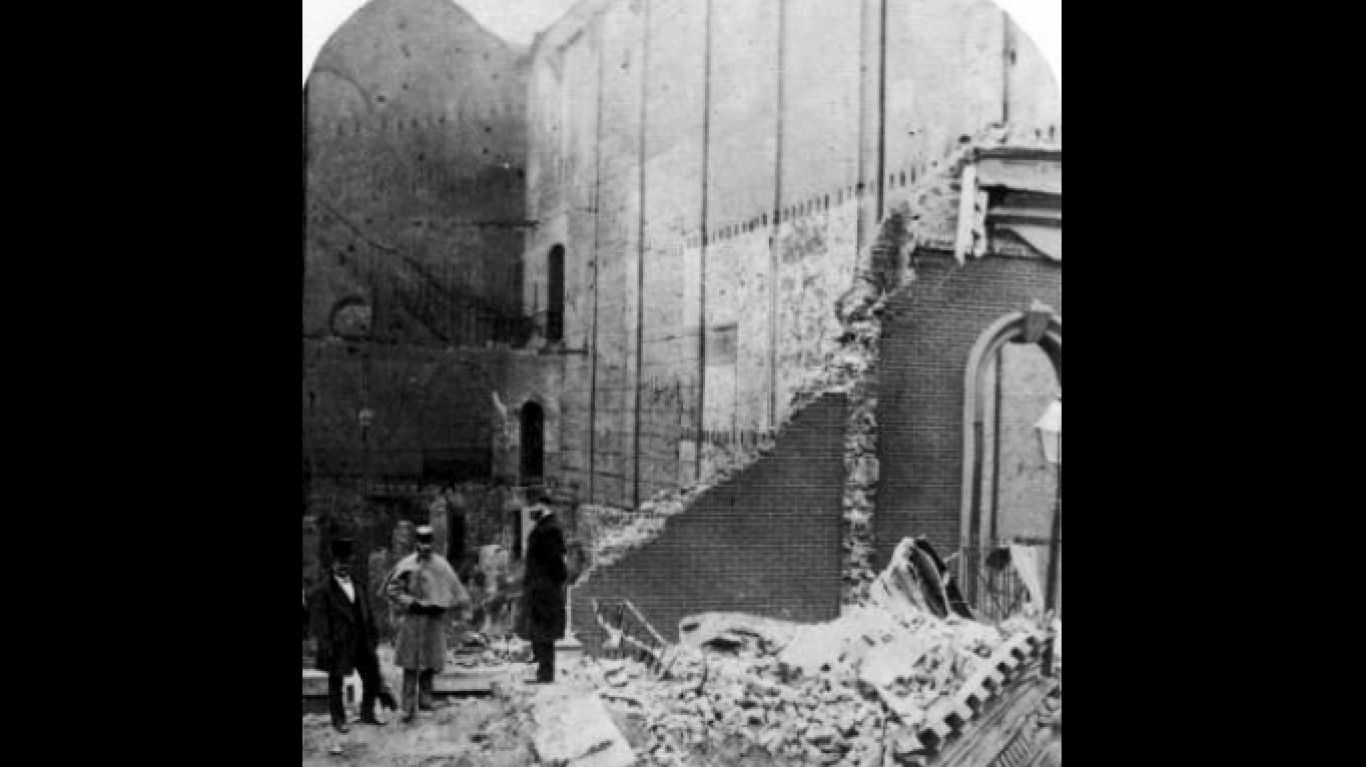
16. The Brooklyn Theatre fire
> Est. casualties: 285
> Location: Brooklyn, NY
> Date: Dec. 5, 1876

15. The New London School explosion
> Est. casualties: 294
> Location: New London, TX
> Date: March 18, 1937
[in-text-ad]
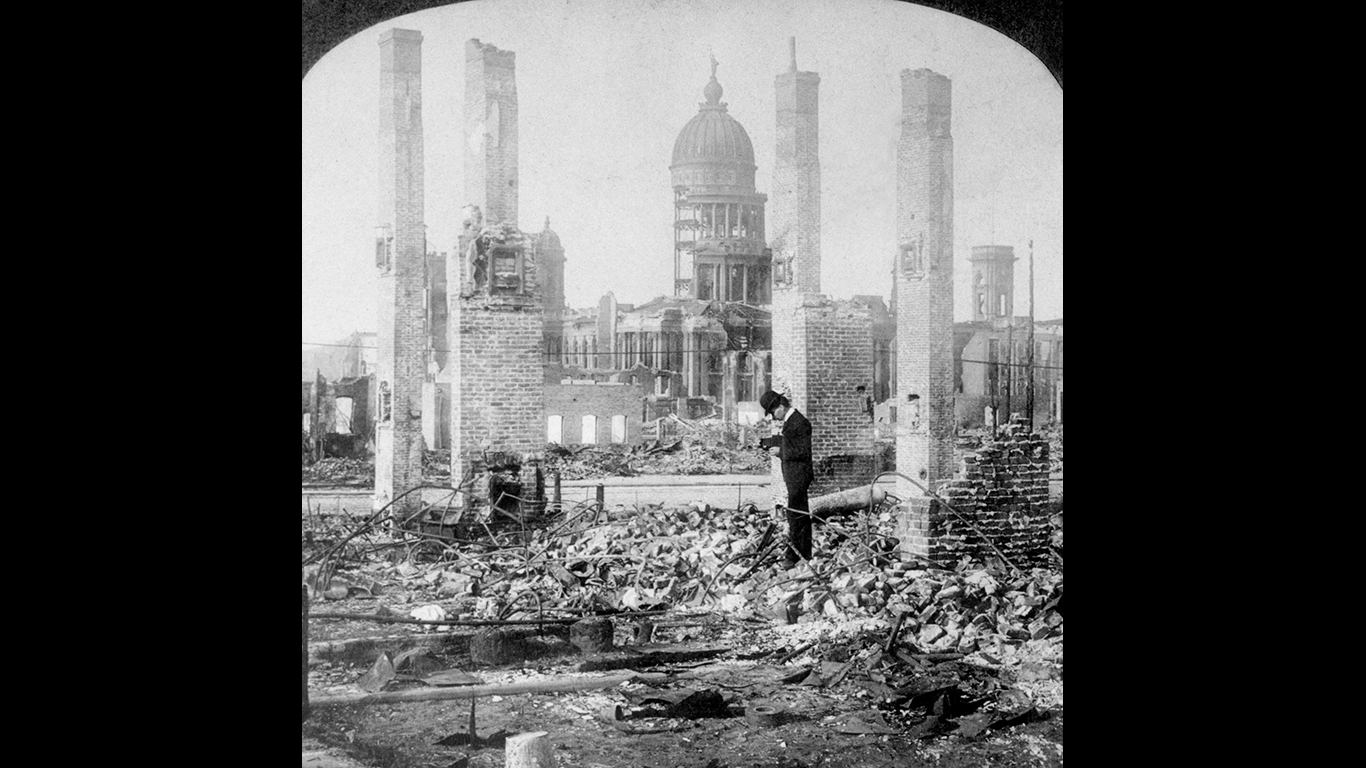
14. The Great 1906 San Francisco Earthquake
> Est. casualties: 315
> Location: San Francisco, CA
> Date: April 18, 1906

13. The Ohio State Penitentiary fire
> Est. casualties: 320
> Location: Columbus, OH
> Date: April 21, 1930
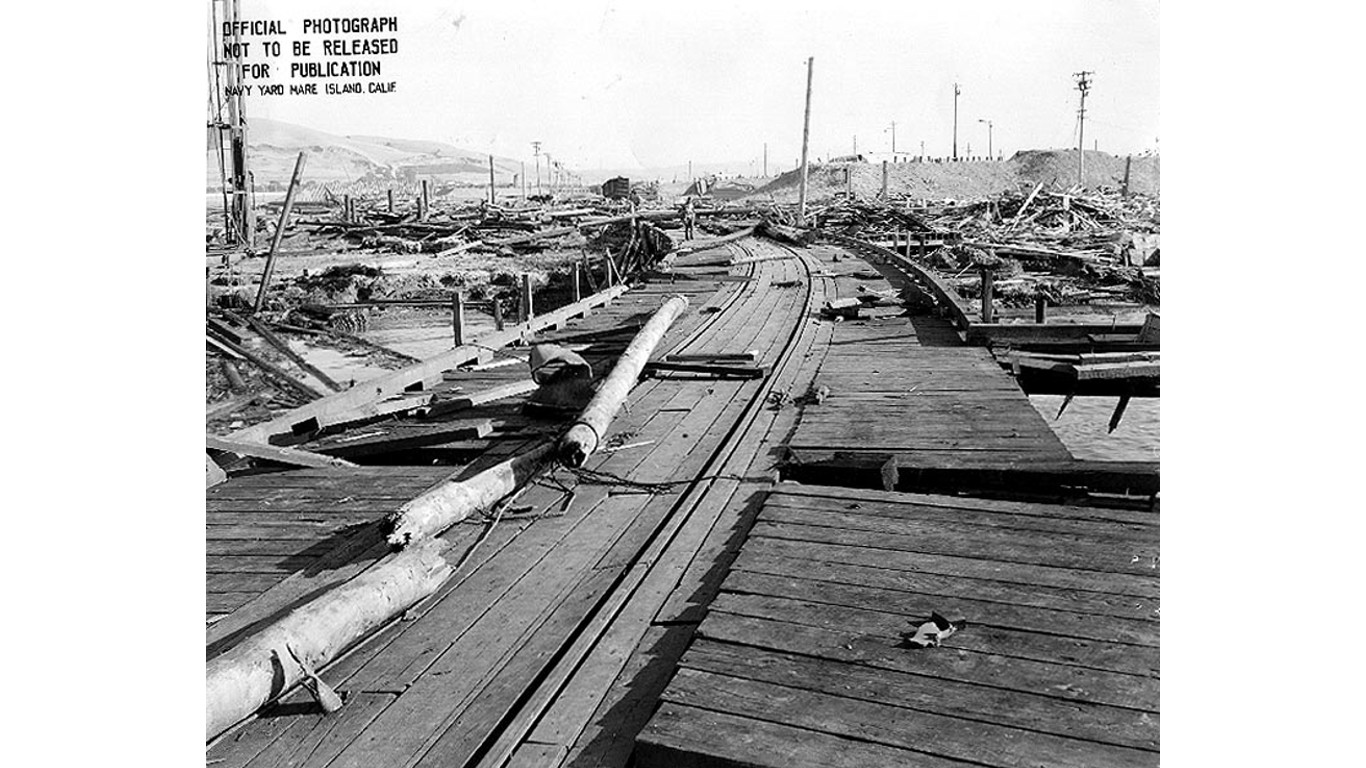
12. The Port Chicago disaster
> Est. casualties: 322
> Location: Port Chicago, CA
> Date: July 17, 1944
[in-text-ad-2]
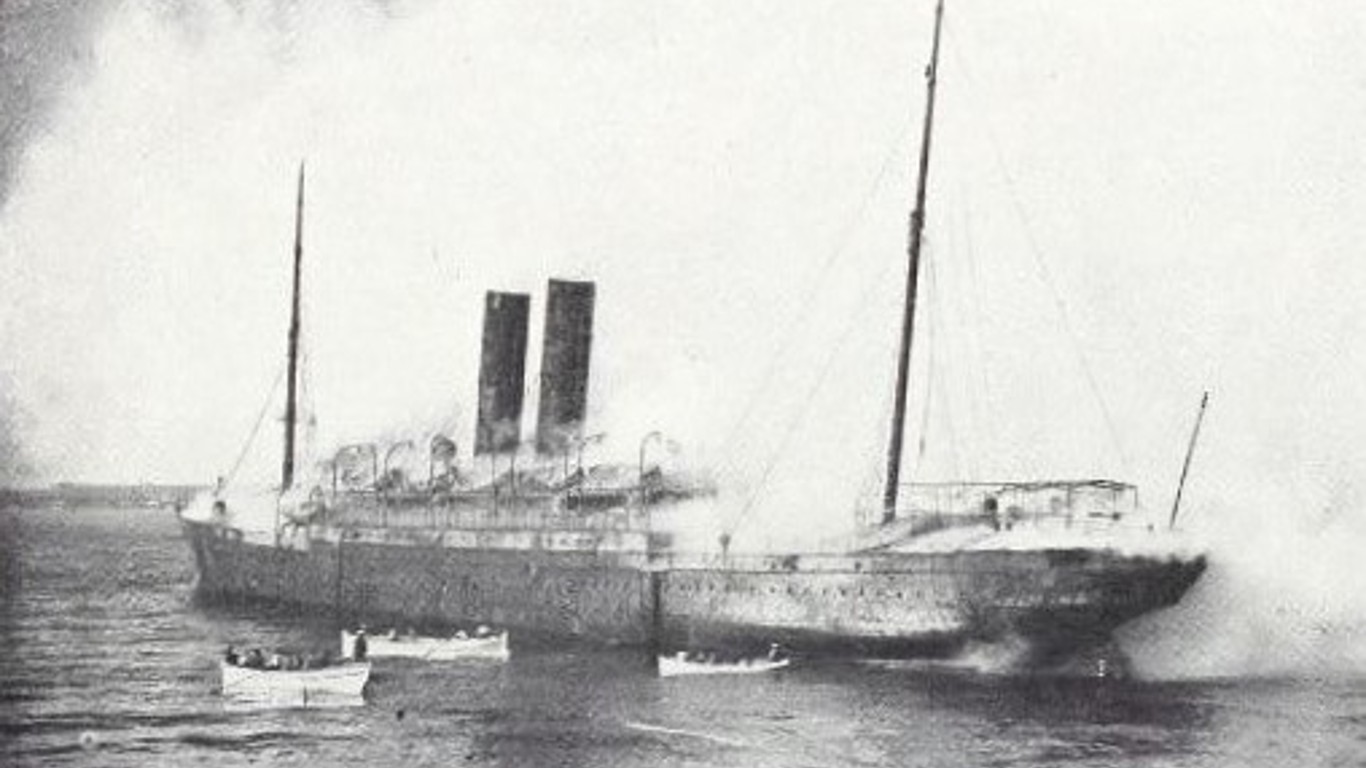
11. The Hoboken Docks fire
> Est. casualties: 326
> Location: Hoboken, NJ
> Date: June 30, 1900
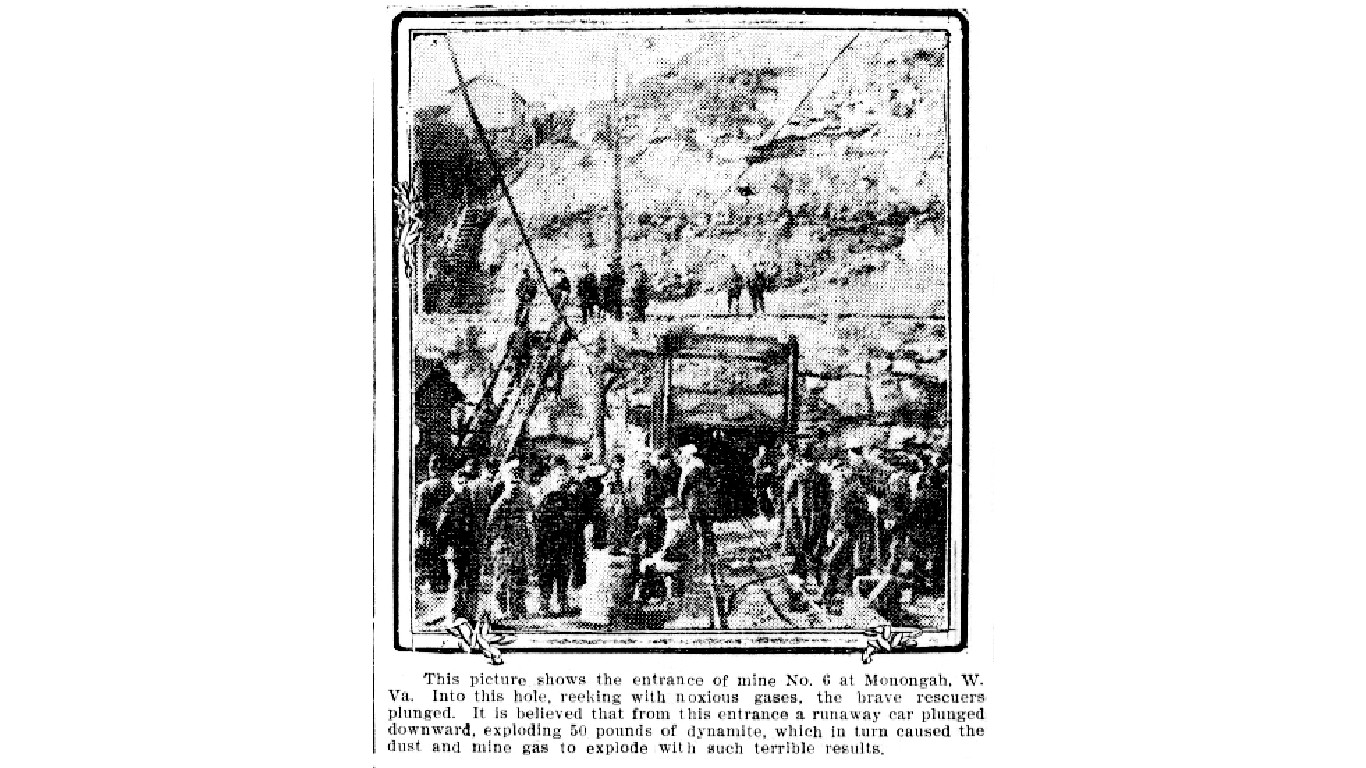
10. The Monongah mining disaster
> Est. casualties: 361
> Location: Monongah, WV
> Date: Dec. 6, 1907
[in-text-ad]
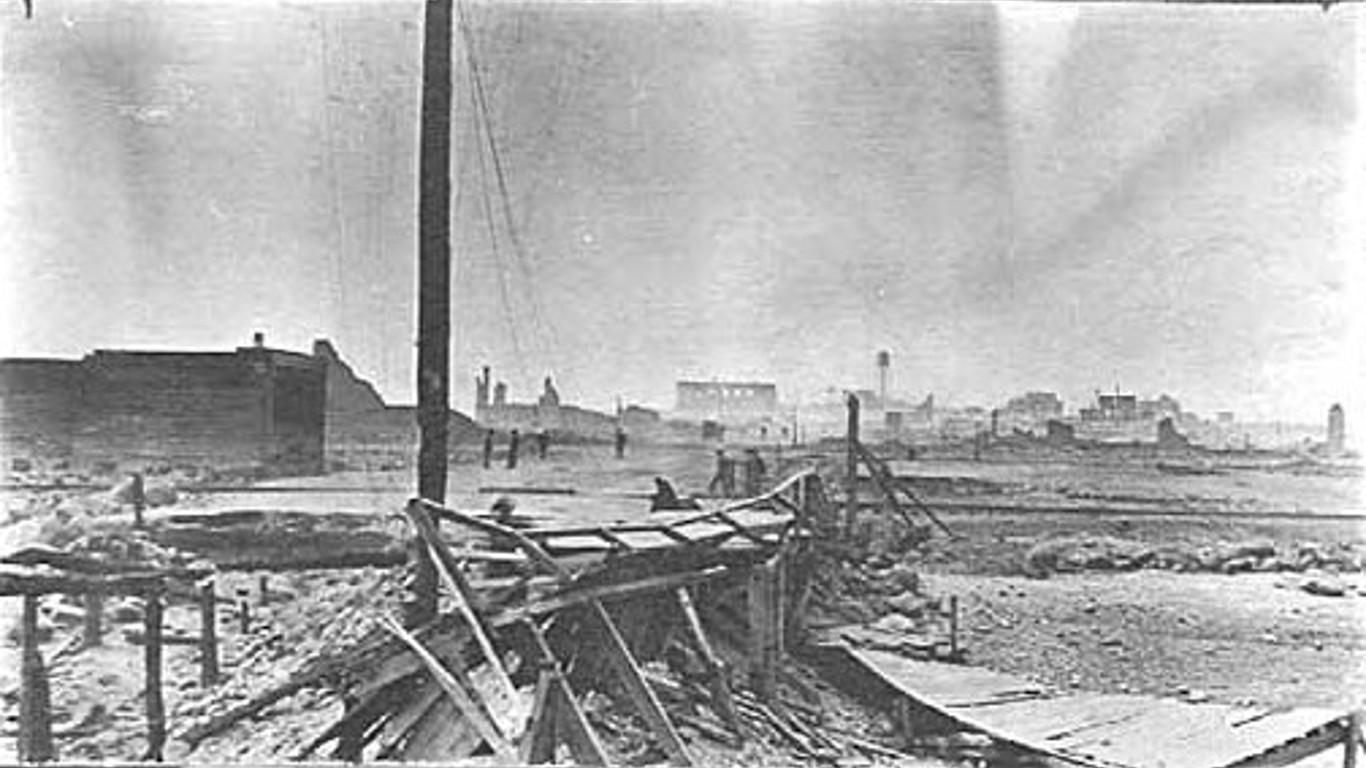
9. The Great Hinckley forest fire
> Est. casualties: 418
> Location: Hinckley, MN
> Date: Sept. 1, 1894

8. The Texas City industrial fire
> Est. casualties: 468
> Location: Texas City, TX
> Date: April 16, 1947
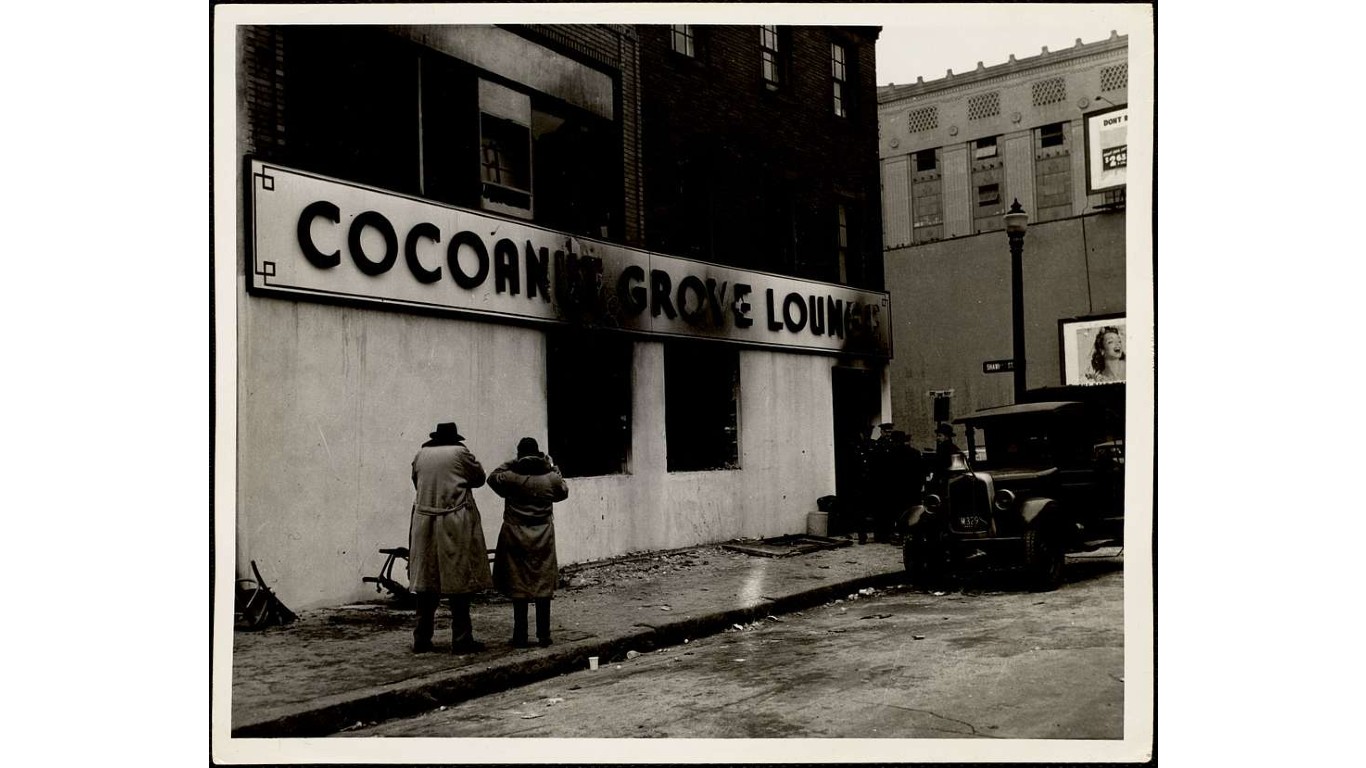
7. The Cocoanut Grove nightclub fire
> Est. casualties: 492
> Location: Boston, MA
> Date: Nov. 28, 1942
[in-text-ad-2]

6. The Cloquet forest fire
> Est. casualties: 559
> Location: Cloquet, MN
> Date: Oct. 12, 1918
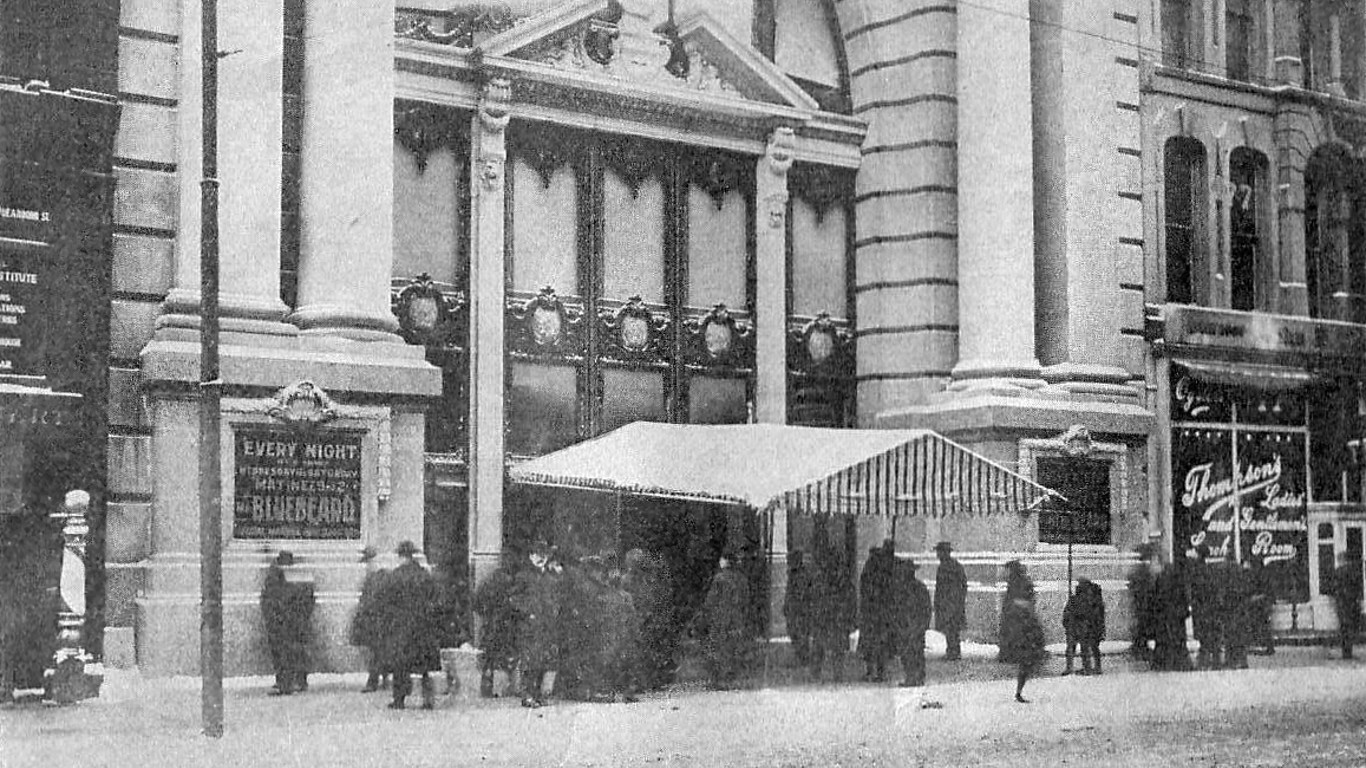
5. The Iroquois Theater fire
> Est. casualties: 602
> Location: Chicago, IL
> Date: Dec. 30, 1903
[in-text-ad]
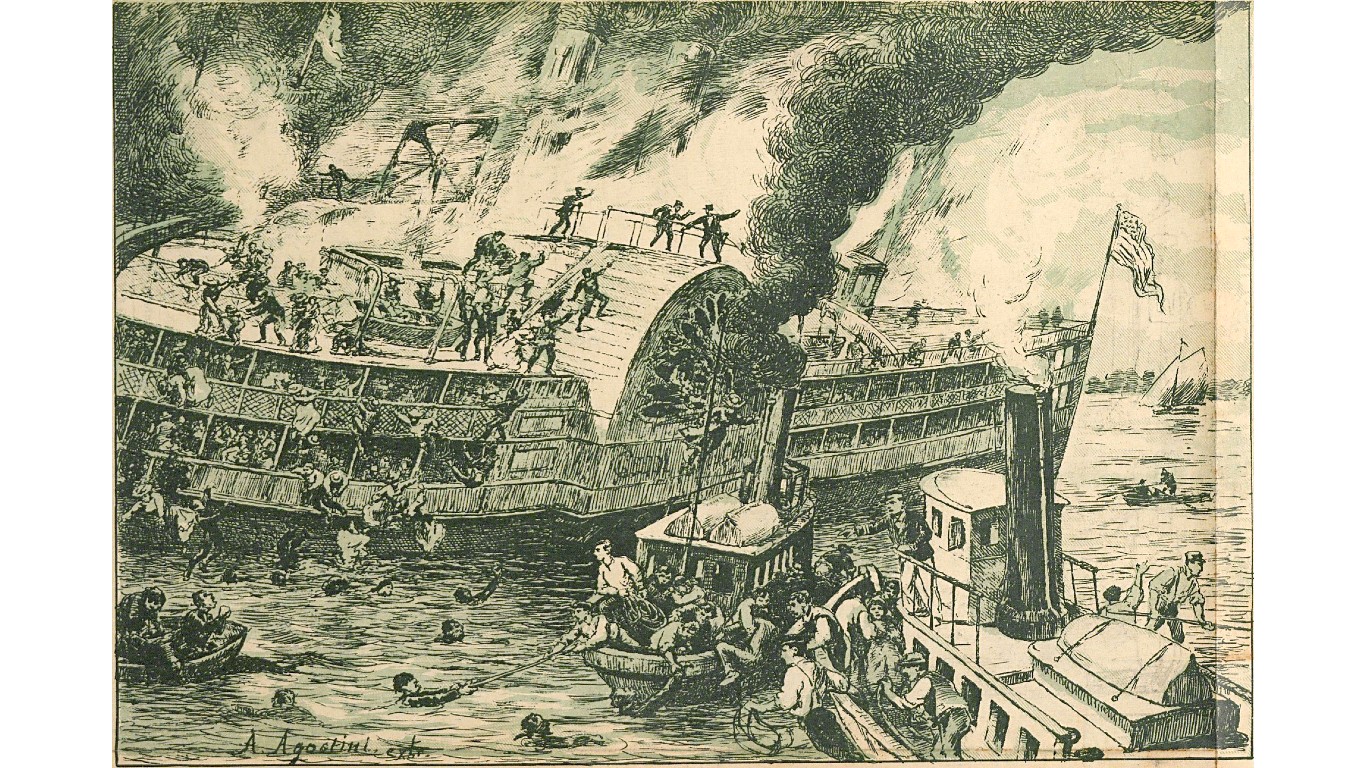
4. The General Slocum steamboat disaster
> Est. casualties: 1,030
> Location: New York, NY
> Date: June 15, 1904

3. The Peshtigo fire
> Est. casualties: 1,152
> Location: Peshtigo, WI
> Date: Oct. 8, 1871

2. The Sultana steamboat disaster
> Est. casualties: 1,547
> Location: Mississippi River
> Date: April 27, 1865
[in-text-ad-2]

1. The World Trade Center attacks
> Est. casualties: 2,666
> Location: New York, NY
> Date: Sept. 11, 2001
The average American spends $17,274 on debit cards a year, and it’s a HUGE mistake. First, debit cards don’t have the same fraud protections as credit cards. Once your money is gone, it’s gone. But more importantly you can actually get something back from this spending every time you swipe.
Issuers are handing out wild bonuses right now. With some you can earn up to 5% back on every purchase. That’s like getting a 5% discount on everything you buy!
Our top pick is kind of hard to imagine. Not only does it pay up to 5% back, it also includes a $200 cash back reward in the first six months, a 0% intro APR, and…. $0 annual fee. It’s quite literally free money for any one that uses a card regularly. Click here to learn more!
Flywheel Publishing has partnered with CardRatings to provide coverage of credit card products. Flywheel Publishing and CardRatings may receive a commission from card issuers.
Thank you for reading! Have some feedback for us?
Contact the 24/7 Wall St. editorial team.